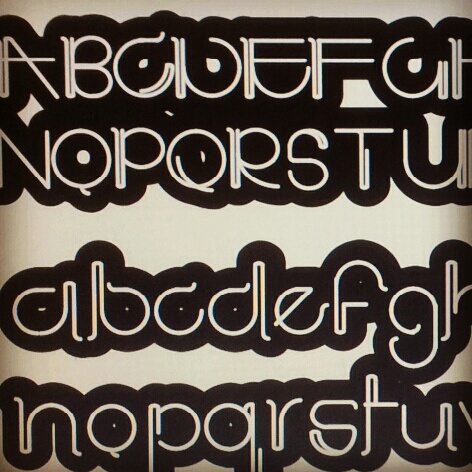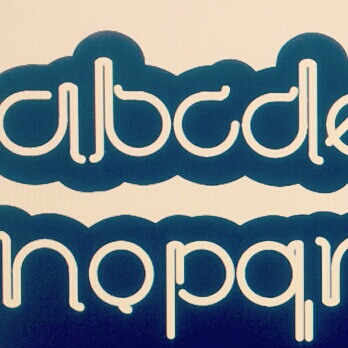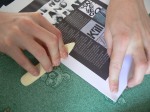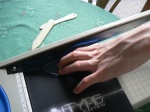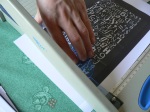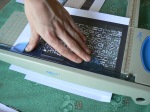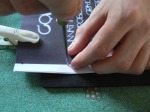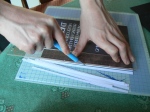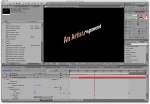
Making and binding the INTYPE book in photographs…
I stitched the 24 pages together by creating 5 small holes along the left hand side, and using 3 book lengths of cotton. I then applied a strong glue down the spine of the book to attach the cover. To finish off the book, I used a corner rounder cutter, and cut evenly on each page corner. Here are some images of the process.
Adobe After Effects and Creative Suite – motion graphics software
Here are some screen grabs of the programs:
How I set up and operate my creative agency business – Jon Mowat (video/motion graphics)
Jon Mowat is a busy man. Business is good and his growing video and motion graphics agency, Hurricane Media, is very well connected within Bristol’s vibrant digital and creative scene.
Jon’s background at the BBC set him in good stead for when he set up his own business, but, for family reasons, he needed to do something else. “I made documentaries for BBC1 – a lot of ‘blue-flashing-light’ stuff, but I was spending too much time away from home. Six months in Iraq is far too long to be away from my wife Charlotte, three-year-old daughter Florence and baby, Spencer.
“At the BBC I learnt how to use a camera and tell stories. My chance to go it alone came when I made a corporate video for a friend’s company. People really liked the high production values and I realised there was a gap in the market.”
Finding premises
So how did he survive his first year in business? “We operated out of a tiny, £50-per-week office rented from [Bristol-based enterprise agency] BRAVE,” says Jon. “Affordable office space was the best support we could have got back then, because when you’re starting out price is often the only thing on which you can compete, so you must keep your costs down. We’ve scaled up to bigger offices in the same complex since then, so having that flexibility was extremely useful, too.”
Jon soon had to take on his first employees. “From the point of view of a young growing agency, it’s always good to have staff that are as passionate as you are about making the business a success. The whole team has to work very closely together and if you’re looking for a 9-5 role, without much diversity, then a fledgling agency probably isn’t for you,” he says candidly.
“In 2009 we recruited a superb business development guy, Mark Smout, which is the best thing we’ve done. Now our clients include Peugeot, Puma, Panasonic, Alcatel, Kraft, Balfour Beatty, Britvic, HTC, JISC, SACO Apartments and The Soil Association.
“Any sales team must be self-funding. An owner should never be tempted to use a loan to pay a salary. If you aren’t billing – that ‘money in the bank’ is an illusion.”
Growing a business
When attempting to grow a business, Jon recommends cutting your cloth according to your means. “Get a foothold and grow sales, then you can take on specialists.
“Be careful with your money, too. To start with, we hired cameras and kit. As we got more work, we bought cameras. We have invested in equipment when we could afford to, guided by our sales and cashflow.
Setting prices is another key task with which many new business owners struggle. “I’d love to charge more for everything we do, because we put our heart and soul into every piece of work we do, but it’s incredibly competitive out there. We have this debate all the time. But we keep coming back to wanting to do the best we possibly can – whatever the fee. It pays dividends in the end, through word of mouth.”
Growth sector
When it comes to starting a business, Jon advises starting up in a growing sector. “There’s been an explosion in demand for video for the web. That’s great for us. We’re in a growth sector, which is the best place to be.”
So what does the future hold? “My business partner, John Lanyon, and I are creatives. We want to make stuff – not sit in board meetings all day. So keeping the size manageable is important. For us it’s important to work directly with an in-house team or with partner agencies, staying close to the work,” he concludes.
